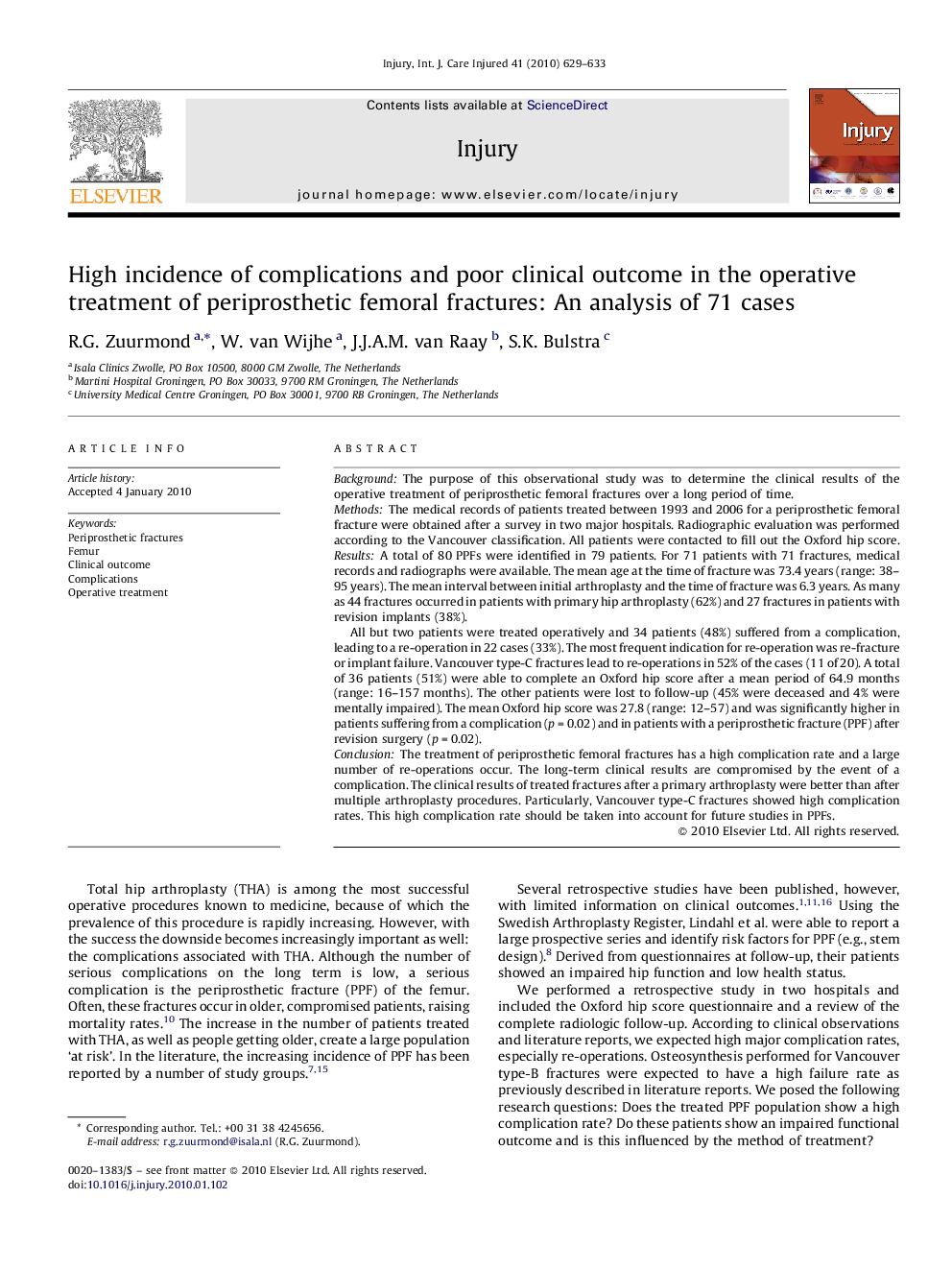| کد مقاله | کد نشریه | سال انتشار | مقاله انگلیسی | نسخه تمام متن |
|---|---|---|---|---|
| 3240983 | 1206061 | 2010 | 5 صفحه PDF | دانلود رایگان |

BackgroundThe purpose of this observational study was to determine the clinical results of the operative treatment of periprosthetic femoral fractures over a long period of time.MethodsThe medical records of patients treated between 1993 and 2006 for a periprosthetic femoral fracture were obtained after a survey in two major hospitals. Radiographic evaluation was performed according to the Vancouver classification. All patients were contacted to fill out the Oxford hip score.ResultsA total of 80 PPFs were identified in 79 patients. For 71 patients with 71 fractures, medical records and radiographs were available. The mean age at the time of fracture was 73.4 years (range: 38–95 years). The mean interval between initial arthroplasty and the time of fracture was 6.3 years. As many as 44 fractures occurred in patients with primary hip arthroplasty (62%) and 27 fractures in patients with revision implants (38%).All but two patients were treated operatively and 34 patients (48%) suffered from a complication, leading to a re-operation in 22 cases (33%). The most frequent indication for re-operation was re-fracture or implant failure. Vancouver type-C fractures lead to re-operations in 52% of the cases (11 of 20). A total of 36 patients (51%) were able to complete an Oxford hip score after a mean period of 64.9 months (range: 16–157 months). The other patients were lost to follow-up (45% were deceased and 4% were mentally impaired). The mean Oxford hip score was 27.8 (range: 12–57) and was significantly higher in patients suffering from a complication (p = 0.02) and in patients with a periprosthetic fracture (PPF) after revision surgery (p = 0.02).ConclusionThe treatment of periprosthetic femoral fractures has a high complication rate and a large number of re-operations occur. The long-term clinical results are compromised by the event of a complication. The clinical results of treated fractures after a primary arthroplasty were better than after multiple arthroplasty procedures. Particularly, Vancouver type-C fractures showed high complication rates. This high complication rate should be taken into account for future studies in PPFs.
Journal: Injury - Volume 41, Issue 6, June 2010, Pages 629–633